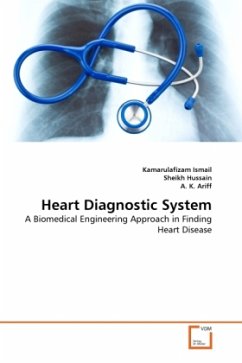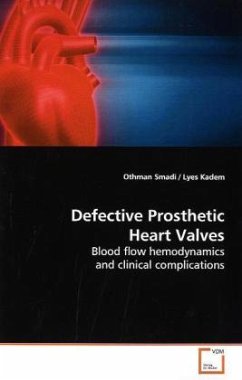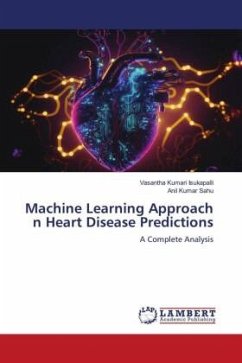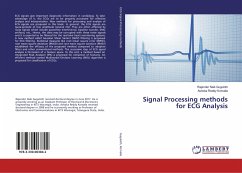
Noninvasive Electrical Imaging of the Heart
Theory and Computational Framework
Versandkostenfrei!
Versandfertig in 6-10 Tagen
79,00 €
inkl. MwSt.

PAYBACK Punkte
0 °P sammeln!
Non-invasive electrical imaging of the heart aims to quantitatively reconstruct information about the electrical activity of the heart from multiple ECG measurements. It has the potential to provide more information about the underlying cardiac electrical activity than is currently provided by a standard 12-lead ECG. This book presents the computational framework required to produce such information. The procedures required to create a subject specific cardiac and torso models are presented. Inverse methods based on the two predominant electrocardiographic sources (epicardial potentials and my...
Non-invasive electrical imaging of the heart aims to
quantitatively reconstruct information about the
electrical activity of the heart from multiple ECG
measurements. It has the potential to provide more
information about the underlying cardiac electrical
activity than is currently provided by a standard 12-
lead ECG. This book presents the computational
framework required to produce such information. The
procedures required to create a subject specific
cardiac and torso models are presented. Inverse
methods based on the two predominant
electrocardiographic sources (epicardial potentials
and myocardial activation times) are described in
detail. Myocardial activation times are computed
based on the Critical Point Theorem while epicardial
potentials are computed using Tikhonov and Truncated
SVD methods as well as Greensite s spatial and
temporal regularisation method. The regularisation
parameters for the epicardial potentials are
determined using a variety of methods (e.g., CRESO
criterion, L-curve, zero-crossing). The accuracy and
reliability of the different methods were compared in
a simulation study in the presence of a variety of
modelling errors.
quantitatively reconstruct information about the
electrical activity of the heart from multiple ECG
measurements. It has the potential to provide more
information about the underlying cardiac electrical
activity than is currently provided by a standard 12-
lead ECG. This book presents the computational
framework required to produce such information. The
procedures required to create a subject specific
cardiac and torso models are presented. Inverse
methods based on the two predominant
electrocardiographic sources (epicardial potentials
and myocardial activation times) are described in
detail. Myocardial activation times are computed
based on the Critical Point Theorem while epicardial
potentials are computed using Tikhonov and Truncated
SVD methods as well as Greensite s spatial and
temporal regularisation method. The regularisation
parameters for the epicardial potentials are
determined using a variety of methods (e.g., CRESO
criterion, L-curve, zero-crossing). The accuracy and
reliability of the different methods were compared in
a simulation study in the presence of a variety of
modelling errors.












